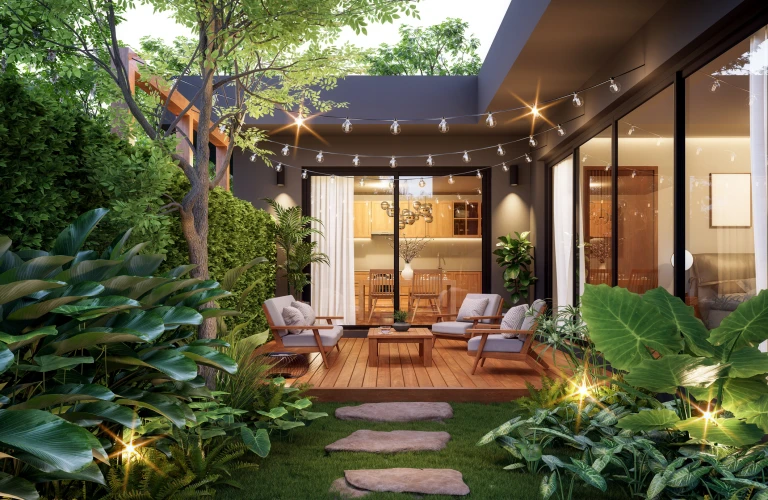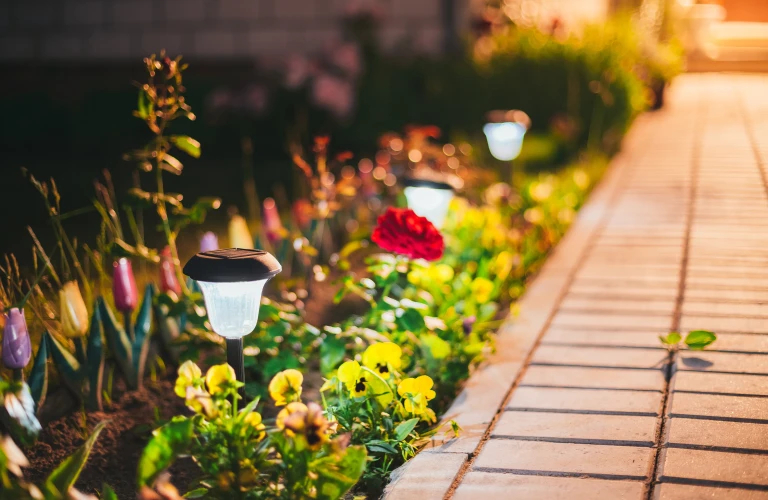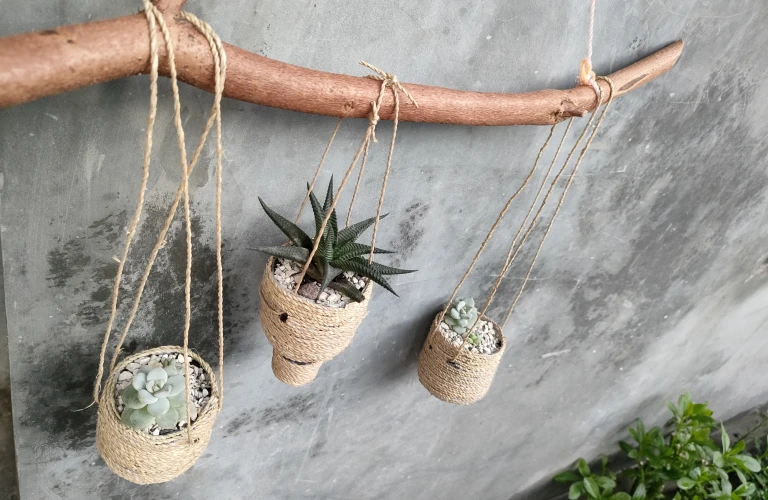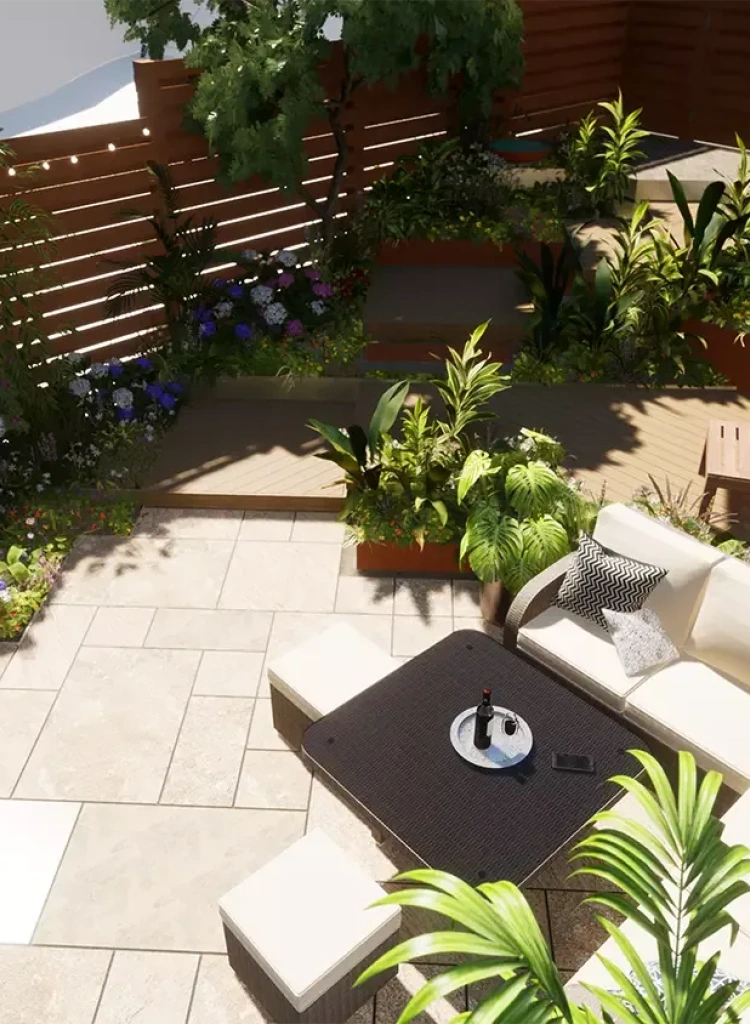
How to Address a Cluttered Garden Design: Strategies for Tranquility
Got a garden design that feels cluttered or chaotic? We’ve got you covered! Understanding the importance of addressing a cluttered or chaotic garden design is the first step toward creating a harmonious outdoor environment that promotes relaxation and enjoyment. One way to achieve this is by strategically incorporating shrubs as focal points in your home’s landscape. Additionally, carefully selecting hardscaping materials can further enhance the overall aesthetic and functionality of your outdoor space. No need to stress – practical hardscaping materials solutions are here to transform your garden into a peaceful and organized space. Examples of hardscaping materials go beyond traditional options, offering a variety of shapes to suit your needs.
With North Hill Gardens tips and examples, you’ll learn how to bring order and functionality back to your side garden. Incorporating hardscaping elements from a garden center can transform your space into a beautiful and functional oasis. Whether you’re looking to create defined garden beds or add pathways, hardscaping is the key to achieving a well-organised and visually appealing side garden. By strategically incorporating hardscaping, you can go beyond the traditional garden and create a space that is both visually stunning and functional. Take a look at these examples to see how hardscaping can transform your garden into a tranquil oasis of joy. From reimagining borders to playing with texture, we’ll guide you through the process of decluttering your garden with ease. If you look for an example, this is what you need.
So, if you’re ready to embark on this exciting journey of transforming your garden from chaos to calm, buckle up and get ready for some inspiring ideas that will help you create an outdoor space that brings a sense of peace and harmony into your world. If you look for an example, you’ll see the need to create a peaceful garden.
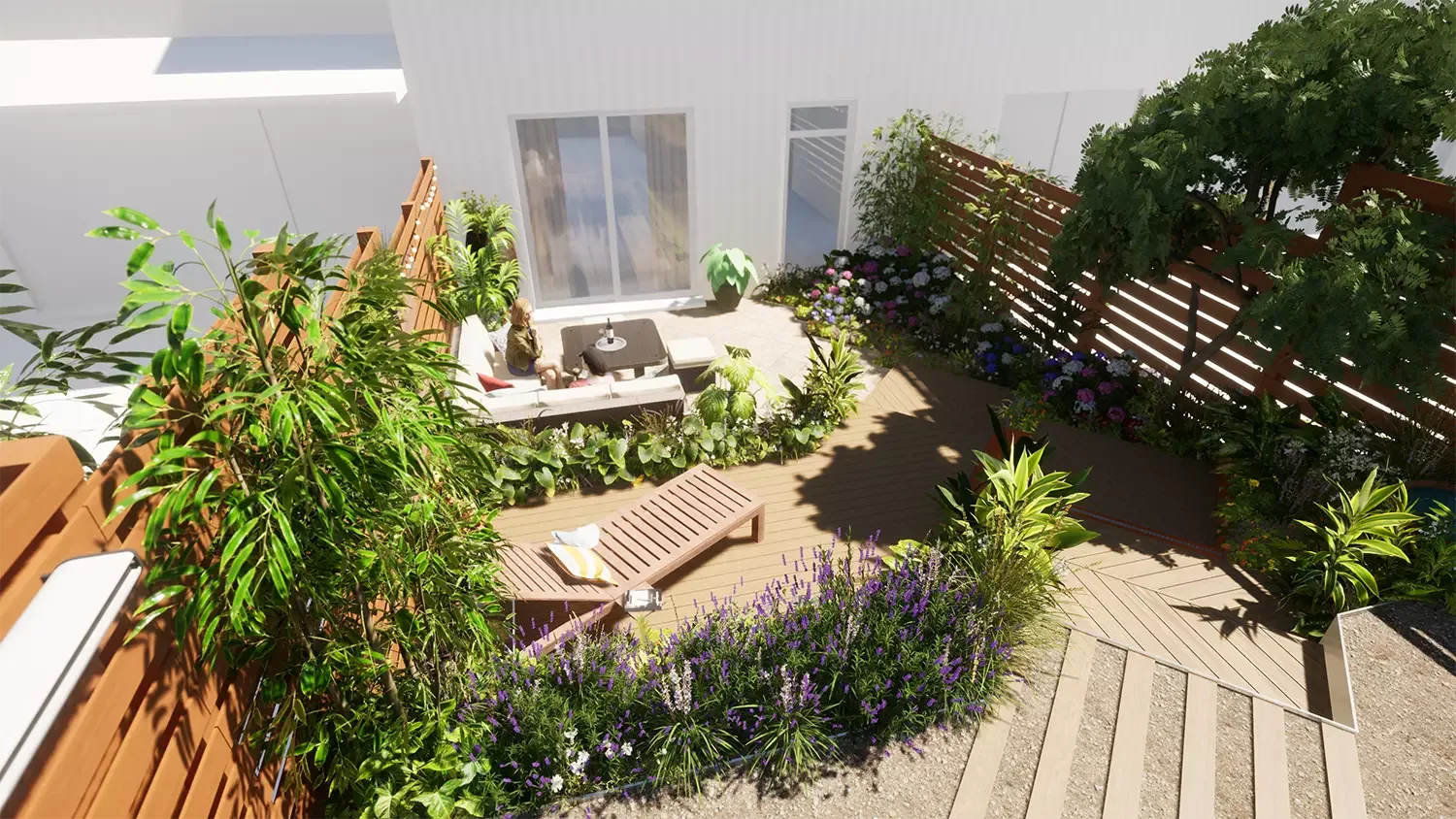
Embracing the Basics of Garden Design
To address the need for a garden design example that feels cluttered or chaotic, it’s essential to familiarise yourself with the fundamental principles of garden design. By understanding these basics, you can create a well-designed garden that brings harmony and balance to your outdoor space. For example, by understanding these basics, you can create a well-designed garden that brings harmony and balance to your outdoor space.
Familiarise Yourself with Fundamental Principles
Garden design is a prime example of how various elements come together to create an aesthetically pleasing and functional space. Start by exploring the key principles that form the foundation of good design, such as garden beds and the side garden. Visit your local garden centre for inspiration and practical examples. These principles include:
- Unity: Create a sense of cohesion in your garden by establishing a unified theme or style throughout the space. For example, you can achieve this by incorporating matching colors, patterns, and materials in your garden design. This could be achieved through consistent use of materials, colours, or plant choices in garden beds. For example, in a side garden.
- Balance: Strive for balance in your garden by distributing visual weight evenly across different areas. For example, you can achieve balance by strategically placing plants and features throughout your garden space. Consider both symmetrical and asymmetrical arrangements to achieve equilibrium.
- Proportion is an important aspect to consider when designing your garden. It involves paying attention to the size and scale of elements within your garden. For example, you should ensure that plants, structures, and other features are in proportion with each other to create a visually appealing and harmonious space. Ensure that garden beds, plants, structures, and pathways are proportionate to each other and fit harmoniously within the overall layout. For example, make sure the garden beds are appropriately sized and positioned in relation to the plants, structures, and pathways.
- Rhythm: Incorporate repetition and patterns into your garden design to establish a sense of rhythm and flow. For example, you can use repeated plantings or arrange plants in a pattern to create rhythm in your garden. This can be achieved through repeating shapes, colours, or plant groupings in garden beds. For example, you can create a visually appealing garden by repeating these elements.
- Contrast: Utilise contrasting elements such as textures, colours, or heights to add visual interest and create focal points within your garden. For example, you can incorporate different textures, colours, or heights to make your garden visually appealing and draw attention to specific areas.
Key Elements for a Well-Designed Garden
Understanding the key elements that contribute to a well-designed garden, such as example, will help you address any cluttered or chaotic aspects effectively.
- Layout: An example of a thoughtful layout is crucial for achieving an organized and visually appealing garden. Consider pathways, seating areas, focal points, and zones dedicated to specific purposes like dining or relaxation. For example, you can create different zones in your outdoor space to cater to various activities.
- Plant Selection: Choose plants wisely based on their growth habits, maintenance requirements, and compatibility with each other. For example, consider the example of choosing plants that have compatible growth habits and maintenance requirements. Aim for a balance of foliage, flowers, and seasonal interest to create a visually pleasing garden bed. For example, incorporating a variety of plants that showcase different foliage colors and textures, along with flowers that bloom at different times of the year, will ensure your garden bed remains visually appealing throughout the seasons.
- Colour Palette: Selecting a cohesive colour palette is essential for creating a harmonious garden design. For example, carefully choosing the right combination of colors will bring balance and unity to your outdoor space. Consider the example colours of plants, hardscaping elements, and accessories to ensure they complement each other.
- Incorporate various shapes and forms into your garden design to add visual interest. For example, you can use different shapes and forms to create a unique and eye-catching garden. Mix rounded, spiky, and cascading plant varieties, for example, or use geometric shapes in hardscaping features.
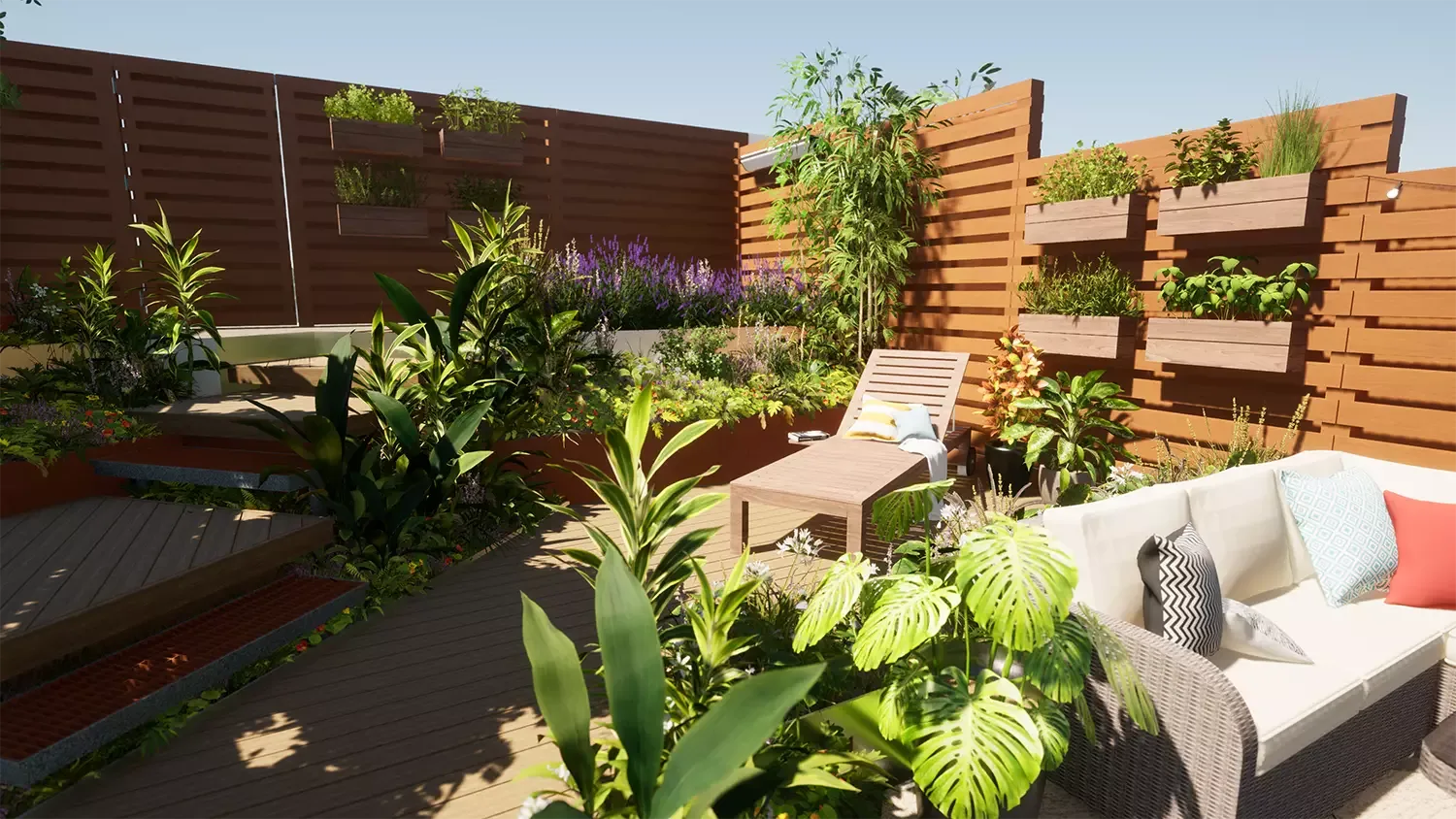
Tackling a Cluttered or Chaotic Garden
With a solid understanding of the fundamental principles and key elements of garden design, you can now effectively tackle a cluttered or chaotic garden. For example, by applying these principles and elements, you can transform your garden into a beautiful and harmonious space.
- Declutter: Begin by removing any unnecessary items or overgrown vegetation that contribute to the cluttered appearance. For example, you can start by getting rid of any excess belongings and clearing out any overgrown plants or bushes. This could involve pruning overgrown shrubs, removing weeds, tidying up misplaced objects, or any other example.
- Create Zones: Establish distinct zones within your garden for different activities or themes. For example, you can create a relaxation zone, a play zone, and a vegetable garden zone. This will help organise the space while maintaining functionality.
- Edit Plant Selection: Assess your current plant selection and consider removing any overcrowded or mismatched plants that disrupt the overall aesthetic. For example, you may want to remove overcrowded or mismatched plants to improve the overall look. Replace them with well-chosen example specimens that align with your desired garden style.
- Reassess Layout: Evaluate the layout of your garden and make adjustments as needed to improve flow and functionality. For example, consider rearranging the placement of plants and features to enhance the overall design and usability. Consider creating clear pathways, defining seating areas, or adding focal points strategically. For example, you could create clear pathways throughout your space to guide visitors. Additionally, defining seating areas can provide designated spaces for relaxation or socialising. Lastly, adding focal points such as artwork or decorative elements can draw attention and enhance the overall ambiance.
By embracing the basics of garden design and applying these principles to address a cluttered or chaotic garden, you can transform it into an organized and visually appealing outdoor space that brings joy and tranquillity. For example, by following the principles of garden design, you can turn your cluttered or chaotic garden into a tranquil and visually appealing outdoor space.
Strategies for a Clutter-Free Garden Layout
To address a cluttered or chaotic garden design, it’s essential to implement effective strategies that declutter and organise the layout. For example, utilizing smart storage solutions and creating designated areas for specific activities can greatly improve the overall organization of the garden. By maximising space and functionality, creating clear pathways, and maintaining aesthetic appeal, you can transform your garden into a tranquil and harmonious space, for example.
Decluttering and Organizing
To create a clean canvas for your garden design, start by decluttering. For example, remove any unnecessary items or plants that may be taking up space. This will help you visualise and plan your design more effectively. Remove any unnecessary items, for example broken pots, unused tools, or overgrown plants, that no longer serve a purpose. Consider donating or repurposing items that are still in good condition but no longer fit with your vision. For example, you could donate them to a local charity or find a creative way to repurpose them.
Organize your garden by grouping similar elements together. Arrange potted plants in clusters based on their size or color to create visual harmony. For example, you can group plants together based on their example size or example color to achieve a balanced and aesthetically pleasing display. Use storage solutions like shelves or cabinets to keep gardening tools and supplies neatly organized and out of sight. For example, you can use shelves or cabinets to store your gardening tools and supplies.
Maximizing Space
Make the most of the available space in your garden by utilising vertical elements, such as trellises and hanging baskets. For example, you can grow climbing plants on a trellis to add height and visual interest to your garden. Hanging baskets are another great example of vertical gardening, allowing you to maximise space by suspending plants from above. By incorporating these examples of vertical elements into your garden, you can create a stunning and efficient use of space. Install trellises or arbors as an example to support climbing plants, which not only add beauty but also save horizontal space. Hanging baskets or wall-mounted planters are perfect for growing flowers or herbs. They are a great example of utilising vertical space instead of using valuable ground area.
Consider using multi-functional furniture pieces that serve dual purposes. For example, benches with built-in storage compartments provide seating options while keeping cushions or gardening equipment neatly tucked away.
Creating Clear Pathways
Clear pathways are crucial for navigating through the garden easily and preventing it from feeling cluttered. Designate clear walkways using materials such as stepping stones, gravel paths, or wooden planks. Ensure they are wide enough for comfortable passage and consider installing lighting along the pathways for safety during evening hours.
Separate different areas of your garden with hedges, low fences, or decorative plant borders. This helps define distinct spaces while maintaining an open feel throughout the overall layout.
Functionality with Aesthetic Appeal
While prioritising functionality, it’s essential to maintain the aesthetic appeal of your garden. Choose plants that not only suit your climate and soil conditions but also complement each other in terms of color, texture, and height. Create focal points using eye-catching elements like sculptures, water features, or ornamental trees.
Incorporate seating areas strategically throughout your garden to provide places for relaxation or socialising. Consider using natural materials like wood or stone for benches or patio furniture to blend seamlessly with the surrounding environment.
By implementing these strategies, you can create a clutter-free garden layout that is both functional and visually appealing. Remember to regularly maintain and review your design to ensure it stays organized and continues to bring you joy. With a well-organised and thoughtfully designed garden, you can enjoy a peaceful oasis right at your doorstep.
Design Principles for Small Garden Tranquillity
To address a garden design that feels cluttered or chaotic, it is essential to explore design principles specifically tailored for small gardens. By making the most of limited space without overwhelming the area, you can create a tranquil and harmonious outdoor space. Here are some techniques to help you achieve this:
Maximize Space with Vertical Gardening
Utilise vertical gardening techniques to optimize your small garden’s space. Install trellises or wall-mounted planters to grow climbing plants such as ivy or jasmine. Hanging baskets and cascading plants can add depth and visual interest while saving valuable floor space. Incorporating shelves or tiered plant stands can also provide additional areas for displaying potted flowers or herbs.
Create Zones for Functionality
Divide your small garden into distinct zones based on functionality. This approach helps organize the space and prevents it from feeling cluttered. For example, designate one area for seating and relaxation, another for dining, and a separate section for gardening activities. Define each zone using different materials such as paving stones, gravel paths, or decorative borders to visually separate the spaces.
Embrace Simplicity in Design
When designing a small garden, simplicity is key to creating an uncluttered and serene atmosphere. Avoid overcrowding the space with too many elements or intricate designs. Opt for clean lines, minimalist furniture, and simple yet striking focal points like a water feature or sculpture. Choose a limited color palette that complements your surroundings and consider incorporating natural materials like wood or stone.
Utilize Reflective Surfaces
Incorporating reflective surfaces in your small garden can create an illusion of spaciousness by bouncing light around the area. Consider adding mirrors strategically placed on walls or fences to give the impression of depth and make the garden feel larger than it actually is. Using glossy finishes on furniture or incorporating glass elements can further enhance the reflective effect.
Incorporate Clever Storage Solutions
To maintain a clutter-free small garden, it is crucial to incorporate clever storage solutions. Utilize vertical space by installing wall-mounted hooks or racks for storing gardening tools, hoses, and other equipment. Opt for multi-functional furniture with built-in storage compartments to keep cushions, blankets, or outdoor accessories neatly tucked away when not in use. By keeping everything organized and out of sight, you can create a sense of calmness and order in your garden.
By implementing these design principles tailored for small gardens, you can transform a cluttered or chaotic space into an oasis of tranquillity. Maximize the available space through vertical gardening techniques and create functional zones to optimize functionality. Embrace simplicity in your design choices and incorporate reflective surfaces to give the illusion of spaciousness. Lastly, utilise clever storage solutions to maintain an organized and clutter-free environment. With these strategies in place, you can enjoy a serene and peaceful small garden retreat.
Creating a Structured Planting Scheme
To address a garden design that feels cluttered or chaotic, it is essential to have a well-planned planting scheme. By understanding the importance of strategic plant selection and arrangement, you can achieve visual harmony and reduce garden clutter.
Importance of a Well-Planned Planting Scheme
A well-planned planting scheme plays a crucial role in creating an organized and balanced garden design. It helps to bring order and coherence to your outdoor space, making it feel more inviting and visually appealing. By carefully selecting plants that complement each other in terms of height, texture, and colour, you can create a harmonious environment that feels serene and peaceful.
Selecting Plants Strategically
When choosing plants for your garden, consider their growth habits, maintenance requirements, and overall aesthetic appeal. Opt for plants that suit the size of your garden and its specific conditions such as sunlight exposure and soil type. Ensure there is a balance between evergreen plants that provide structure throughout the year and seasonal flowers or foliage for added interest.
Arrange the selected plants strategically by grouping them according to their characteristics. Create focal points by placing taller plants at the back or center of flower beds or borders. This will provide depth to your garden while preventing it from appearing cluttered. Use shorter plants towards the front or edges to frame the view and guide the eye through different areas.
Incorporating Different Heights, Textures, and Colours
To add visual interest to your planting scheme while maintaining structure, incorporate plants with varying heights, textures, and colours. Choose plants with different foliage shapes such as spiky leaves alongside softer ones for contrast. Introduce flowers in complementary colours or use contrasting hues to create focal points within your garden.
Consider using vertical elements like trellises or pergolas adorned with climbing plants to add height without taking up excessive space on the ground. This not only creates an illusion of more room but also adds a sense of vertical structure to your garden design.
Maintaining and Evolving Your Planting Scheme
A well-planned planting scheme requires regular maintenance to prevent it from becoming cluttered or overgrown. Prune plants as needed to maintain their shape and size, removing any dead or diseased foliage promptly. Regular weeding and mulching will help keep the garden tidy and ensure that the focus remains on the carefully selected plants.
As your garden evolves, consider making adjustments to your planting scheme. Remove or relocate plants that have outgrown their designated spaces and replace them with new additions that better suit the overall design. This flexibility allows you to adapt your garden over time while maintaining its structured appearance.
By understanding the importance of a well-planned planting scheme, strategically selecting and arranging plants, incorporating different heights, textures, and colours, and regularly maintaining and evolving your garden design, you can address a cluttered or chaotic outdoor space effectively.
Crafting Unity and Balance in Your Garden
Achieving unity and balance in your garden design is essential to create a harmonious and visually pleasing outdoor space. By considering elements such as colour, shape, and texture, you can craft a garden that feels cohesive and balanced. Integrating different areas seamlessly can further enhance the overall aesthetic appeal of your garden.
Techniques for Achieving Unity and Balance
To achieve unity in your garden design, it’s important to select a unifying theme or style. This could be inspired by nature, such as a cottage garden or a Japanese Zen garden. By sticking to one theme throughout your garden, you create a sense of coherence.
Colour plays a crucial role in creating unity. You can use the colour wheel as a guide to select complementary or analogous colours that work well together. For example, pairing warm colours like reds and oranges with cool colours like blues and purples can create an eye-catching contrast while maintaining harmony.
Shape is another element that contributes to the overall balance of your garden design. Consider incorporating both curved and straight lines to add variety and visual interest. Curved lines can soften the look of your garden, while straight lines provide structure.
Texture adds depth to your garden design. Combining plants with different textures, such as smooth leaves with rough bark or delicate flowers with spiky foliage, creates visual contrast. This juxtaposition adds intrigue and helps maintain balance within the overall composition.
Integrating Different Areas Seamlessly
Creating flow between different areas of your garden is crucial for achieving unity. One way to do this is by using pathways or stepping stones that connect various parts of your outdoor space. These pathways not only serve a functional purpose but also visually link different areas together.
Consider incorporating focal points strategically throughout your garden design. These could be statues, water features, or even large planters filled with vibrant flowers. Focal points draw the eye and provide visual anchors, helping to tie different areas together.
Using repetition can also create a sense of unity. Repeating certain plants, colours, or materials throughout your garden design establishes a consistent visual language. This repetition helps to establish a cohesive look and creates a sense of rhythm and balance.
Establishing Focal Points to Simplify the Space
To address a garden design that feels cluttered or chaotic, it is essential to establish focal points within the space. Focal points serve as visual anchors that divert attention from cluttered areas and create a sense of order and balance. By strategically placing focal points, you can draw the eye towards specific features or views, creating a more cohesive and harmonious garden design.
One way to create attractive focal points is by using sculptures. These artistic elements can add interest and personality to your garden while providing a clear point of focus. Place sculptures in key locations throughout the garden, such as at the centre of a small seating area or near pathways, to guide the viewer’s gaze and create a sense of purposeful design.
Water features are another excellent option for establishing focal points in your garden. Whether it’s a tranquil fountain, a cascading waterfall, or a serene pond, water elements not only add beauty but also help mask any unwanted noise or distractions. By positioning water features strategically within your outdoor space, you can create a calming ambiance while drawing attention away from cluttered areas.
Architectural elements can also serve as effective focal points in your garden design. Consider incorporating pergolas, arches, or trellises into your outdoor space to provide structure and define different zones within the garden. These architectural features not only add visual interest but also offer opportunities for vertical gardening or hanging plants, further enhancing the overall aesthetic appeal.
When creating focal points in your garden, it’s important to consider scale and proportion. Choose objects or elements that are appropriate for the size of your space so that they don’t overwhelm or appear out of place. Ensure that each focal point complements the surrounding landscape and contributes to the overall theme or style you wish to achieve.
By strategically establishing focal points in your garden design, you can simplify the space and redirect attention away from cluttered or chaotic areas. Whether it’s through sculptures, water features, or architectural elements, these focal points serve as visual anchors that create a more cohesive and visually appealing outdoor environment. Remember to consider scale and proportion when selecting and placing focal points to ensure a harmonious and balanced garden design.
Incorporating Hard Landscaping for Organisation
To address a garden design that feels cluttered or chaotic, incorporating hard landscaping can be an effective solution. Hard landscaping refers to the use of structures such as pathways, walls, or raised beds to define spaces and create organisation within your garden. By strategically incorporating these elements, you can bring order and structure to your outdoor space.
Explore the Role of Hardscaping Materials in Creating an Organised Garden Design with Textured Plants and Shrubs. Incorporating many plants can enhance the overall aesthetic of your garden.
Hard landscaping plays a crucial role in creating an organized garden design by providing structure and defining different areas within your outdoor space. Pathways, for example, can guide visitors through the garden while also creating borders between various sections. By incorporating pathways made from materials such as gravel, stone, or brick pavers, you can add visual interest and functionality to your garden while keeping it organised.
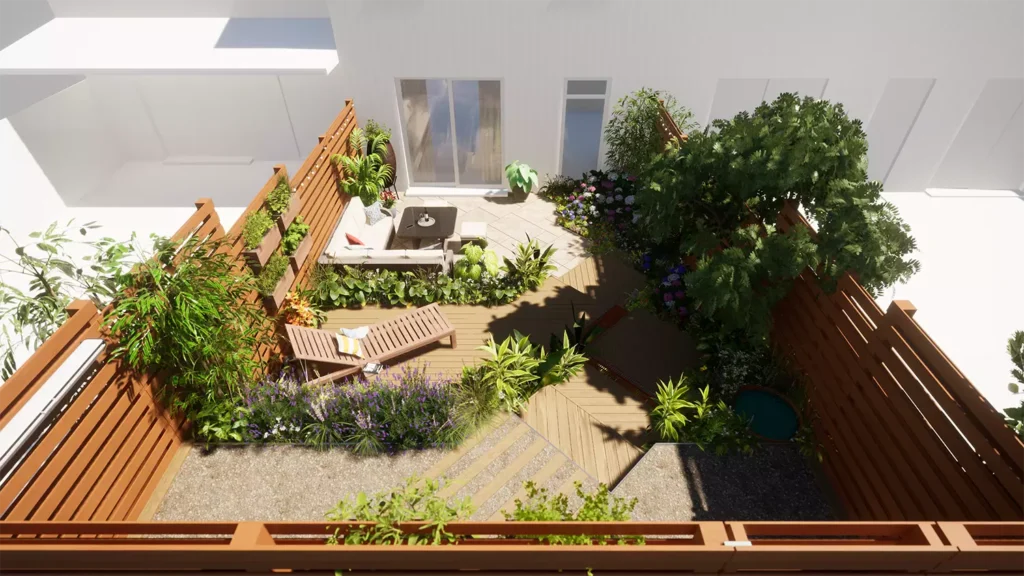
Learn How to Incorporate Structures for Defining Spaces
Walls or fences can also be used to separate different areas of your garden and create distinct zones. These structures not only provide privacy but also act as boundaries that help organise the space. You can use them to enclose seating areas, vegetable gardens, or flowerbeds, giving each section its own identity within the overall design.
Raised beds are another excellent option for organising your garden effectively. They not only provide a designated area for planting but also elevate plants off the ground, making them more accessible and visually appealing. Raised beds can be constructed using various materials like wood or stone and offer multi-functionality by serving as seating areas or decorative features.
Discover Ideas for Using Materials and Textures that Complement Your Overall Garden Theme, including textured plants, a carefully chosen colour scheme or color palette, and strategic hardscaping.
When incorporating hard landscaping into your garden design, it’s essential to consider materials and textures that complement your overall theme. For example, if you have a contemporary-style garden with clean lines and minimalistic aesthetics, you may opt for sleek concrete pathways or modern metal fencing. On the other hand, if your garden has a more rustic or natural feel, materials like weathered wood or natural stone can create a harmonious look.
By carefully selecting hardscaping materials that align with your garden’s theme, you can enhance the overall aesthetic while maintaining an organised and cohesive design.
Incorporating hard landscaping elements such as pathways, walls, or raised beds can transform a cluttered or chaotic garden into an organised and visually appealing outdoor space. These structures provide definition and boundaries to different areas while adding functionality and visual interest. By exploring various options and selecting materials that complement your garden’s theme, you can create a well-organized and inviting outdoor oasis.
Plant Selection for Optimal Growth and Aesthetics
Choosing the right plants for your garden is crucial in creating a design that feels organised and visually appealing. By understanding the importance of plant selection, you can ensure optimal growth and create a harmonious atmosphere in your outdoor space.
Suitable Plants for Garden Conditions
To address a garden design that feels cluttered or chaotic, it’s essential to select plants that are suitable for your specific garden conditions. Consider factors such as climate, soil type, and sunlight exposure when choosing your plants. Different plants have different requirements, so it’s important to match them with the conditions in your garden.
For instance, if you have a shady area, opt for textured plants like ferns or hostas that thrive in lower light conditions. On the other hand, if you have a sunny spot, consider vibrant flowering shrubs or ornamental grasses to add interest and colour.
Thriving in Climate and Soil Type
Understanding the climate and soil type of your region is key to selecting plants that will thrive in your garden. Research which plant varieties are best suited to your local climate conditions. Some plants may be more drought-tolerant or resistant to cold temperatures than others.
Similarly, assess the soil type in your garden before choosing plants. Some plants prefer well-draining sandy soil, while others thrive in clayey or loamy soils. By selecting plants that are adapted to your specific climate and soil conditions, you can ensure they will grow healthily and contribute positively to the overall aesthetic of your garden.
Combining Plant Varieties
To create a visually appealing yet low-maintenance garden design, consider combining different plant varieties strategically. Aim for a mix of foliage textures and colours to add depth and interest to your outdoor space.
For example, pairing tall spiky flowers like lupins with low-growing ground covers can create an eye-catching contrast. Using mulch around plantings can help define and separate different areas, creating a more organised look.
Embrace a maximalist approach by incorporating a variety of plants, but do so thoughtfully. Consider the overall scale and balance of your garden to avoid it feeling overwhelming. Group plants with similar care requirements together to make maintenance easier.
By carefully selecting plants that suit your garden’s conditions, thriving in your climate and soil type, and combining them strategically, you can address a garden design that feels cluttered or chaotic. The right plant selection will not only contribute to the aesthetics of your outdoor space but also ensure optimal growth for a healthy and vibrant garden.
Embracing a Low-Maintenance Gardening Approach
Simplifying Garden Maintenance and Reducing Clutter
Maintaining a garden can sometimes feel overwhelming, especially when it starts to appear cluttered or chaotic. However, there are strategies you can employ to simplify garden maintenance and create a more organized and serene outdoor space. By implementing these techniques, you can reduce clutter over time and enjoy a low-maintenance garden that is both beautiful and manageable.
One effective way to address a garden that feels cluttered is by carefully selecting plants and design features that require minimal upkeep. Opt for low-maintenance plants that are well-suited to your specific climate and growing conditions. Consider factors such as dappled shade or full sun exposure, as this will help ensure the plants thrive with minimal care. Choose design features such as pathways or raised beds that are easy to maintain and keep tidy.
Efficient Watering, Weeding, and Pruning
Efficient watering is crucial in maintaining a clutter-free garden. Consider installing an irrigation system or using soaker hoses to deliver water directly to the roots of your plants. This not only saves time but also ensures efficient water usage while reducing weed growth.
Weeding is another essential task in keeping your garden looking neat and organised. Regularly inspect your garden for weeds and remove them promptly before they have a chance to spread. Mulching around plants can also help suppress weed growth by blocking sunlight from reaching weed seeds.
Pruning plays a vital role in maintaining the shape and overall appearance of your plants. Regularly trim back overgrown branches or foliage to prevent them from overshadowing other plants or encroaching on walkways. Proper pruning techniques will not only enhance the aesthetics of your garden but also promote healthy growth.
Creating Functional Outdoor Spaces
To further reduce clutter in your garden, consider creating functional outdoor spaces where you can relax and entertain guests. Designate areas for seating, dining, or even a small herb garden. By allocating specific purposes to different areas of your garden, you can ensure that each space remains organised and clutter-free.
Incorporating storage solutions such as outdoor cabinets or sheds can also help keep gardening tools and supplies out of sight when not in use. This will not only declutter your garden but also make it easier to find and access the items you need for maintenance tasks.
By embracing a low-maintenance gardening approach and implementing these strategies, you can effectively address a garden design that feels cluttered or chaotic. Simplifying garden maintenance, selecting low-maintenance plants and design features, efficient watering, weeding, pruning techniques, and creating functional outdoor spaces are all essential steps towards achieving a more organized and serene garden.
Conclusion
Congratulations! You have now learned valuable strategies for addressing a cluttered or chaotic garden design. By embracing the basics of garden design, creating a structured planting scheme, establishing focal points, and incorporating hard landscaping, you can transform your garden into a tranquil and organised space.
Now it’s time to put these ideas into action. Take a step back and assess your garden with fresh eyes. Identify areas that feel cluttered or overwhelming and apply the principles you have learned to bring balance and harmony. Remember, gardening is a journey, so be patient with yourself and enjoy the process of creating a space that brings you joy and relaxation.
With these newfound skills, you have the power to create a garden that not only looks beautiful but also feels welcoming and serene. So grab your tools, get your hands dirty, and let your creativity flourish in transforming your garden into an oasis of tranquillity.
Frequently Asked Questions
How can I create a garden design that feels cluttered or chaotic with textured plants, a cohesive colour scheme, shrubs, and hardscaping materials?
To address a cluttered or chaotic garden design, start by embracing the basics of garden design. Focus on creating a clutter-free layout by implementing strategies such as establishing focal points, incorporating hard landscaping for organisation, and crafting unity and balance in your garden. Consider selecting plants that promote optimal growth and aesthetics while embracing a low-maintenance gardening approach.
What are some strategies for a clutter-free garden layout with shrubs, ferns, and textured plants? Incorporating these hardscaping materials can create a visually appealing and organized outdoor space.
To achieve a clutter-free garden layout, consider implementing strategies such as creating structured planting schemes, establishing focal points to simplify the space, and incorporating hard landscaping elements for organisation. By following these strategies, you can create a more organised and visually appealing garden.
How can I create tranquillity in my small garden?
Focus on key design principles. Ensure you have proper plant selection for optimal growth and aesthetics. Craft unity and balance within your space by considering colour schemes and textures. Incorporate elements like water features or seating areas to enhance relaxation. With thoughtful planning, even small gardens can exude tranquillity.
How do I establish focal points in my garden?
Establishing focal points in your garden is essential to simplify the space. You can achieve this by using eye-catching elements like sculptures, water features or unique plants strategically placed throughout the area. Focal points draw attention and provide visual interest while helping to create an organized atmosphere.
What is the importance of incorporating hardscaping materials, shrubs, and textured plants in my garden design? Hardscaping materials, such as stone or brick, can provide a solid foundation and structure to your outdoor space. Shrubs and textured plants add depth and variety to your garden, creating visual interest and enhancing the overall aesthetic. By incorporating these elements, you can create a focal point that draws attention and adds character to your garden design.
Incorporating hard landscaping elements into your garden design helps bring organization to the space. Features like pathways, retaining walls or raised beds not only add structure but also provide functionality and aesthetic appeal. Hard landscaping creates defined areas within your garden while complementing the overall design scheme.
